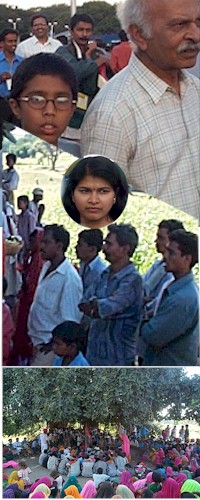|
|
|||
Indian workforce is young , and that's good for growth. |
|||
|
First a primer on how a country's economy and it's population mix are connected. A society stays poor, sadly, when infant mortality rates fall, as that would mean more non-productive dependents. In stage-two, awareness of better child-health, and the difficulties of feeding a large family persuades people to have fewer children. Coinciding with this, is a growing work-force of young that diminishes dependants and puts extra money in people's pockets. This is the stage when, spurred by a large work-force, disposable incomes and rising productivity, the economy enters boom times. In the third stage, decline begins as the work-force grows old. Birth-rates may also have declined in the prosperity phase; the percentage of old-age dependents grows in size. If a society, had planned for this stage with the right investments during phase-two, its economy is adequate for its people, but growth rates are no-where near what they were in boom-time. But, if political mis-management has not planned for stage-three, the cycle can repeat with a viciousness. India's position now. The good news for India is that she may be entering phase-two! But, before we go further and congratulate ourselves, here is a cautionary note: demography influences only a third of the GDP. The rest must come from right, timely and adequate inputs into education, health-care, infrastructure and governance. If India does get it right, her current population, far from being a burden, is in fact an asset. Writing in BusinessWorld [ 'Miracle Economy?', Jan 10,2000], Nitin Srivastava gives us some facts to mull with satisfaction. "First, in the late 70s and early 80s, the birth rate was very high. In the coming years, the surge in the workforce, especially in the 20-40 years age group, can be attributed to this phenomenon. Second, between 1991 and 1995, for the first time, the birth rate fell more than the death rate. So from now on, there will be fewer dependents to feed." India's emerging promise is confirmed by empirical data as well. Experience of the 'tigers'. Economist Paul Krugman observing the tiger-economies of Asia, through the filter of this population dynamics , foresaw long before others the tail-spin that hit them a couple of years ago. Though many have recovered and put their houses in order, they may in fact be exiting stage-two. China may exit the soonest. But, this doesn't mean poverty will return, since, as we saw earlier, this theory in only a part of the growth story. But these economies will not see 10% to 12% growth rates for a long, long time. In this phase offset between India and the Asian economies, India may in fact, derive an additional advantage. India may become the preferred destination for investors and with productivity rising her competitive edge in the world markets may be sharper. For, Indians who remember those derisive references to 'the Hindu rate of growth of 2% per annum', and despairing of her economy ever bringing prosperity to her long-suffering people, this news of her massive population configured for good times, would indeed bring cheer. It is only appropriate to end this with, a prayer that we get the rest of our efforts right! September,2000
|
|
||

